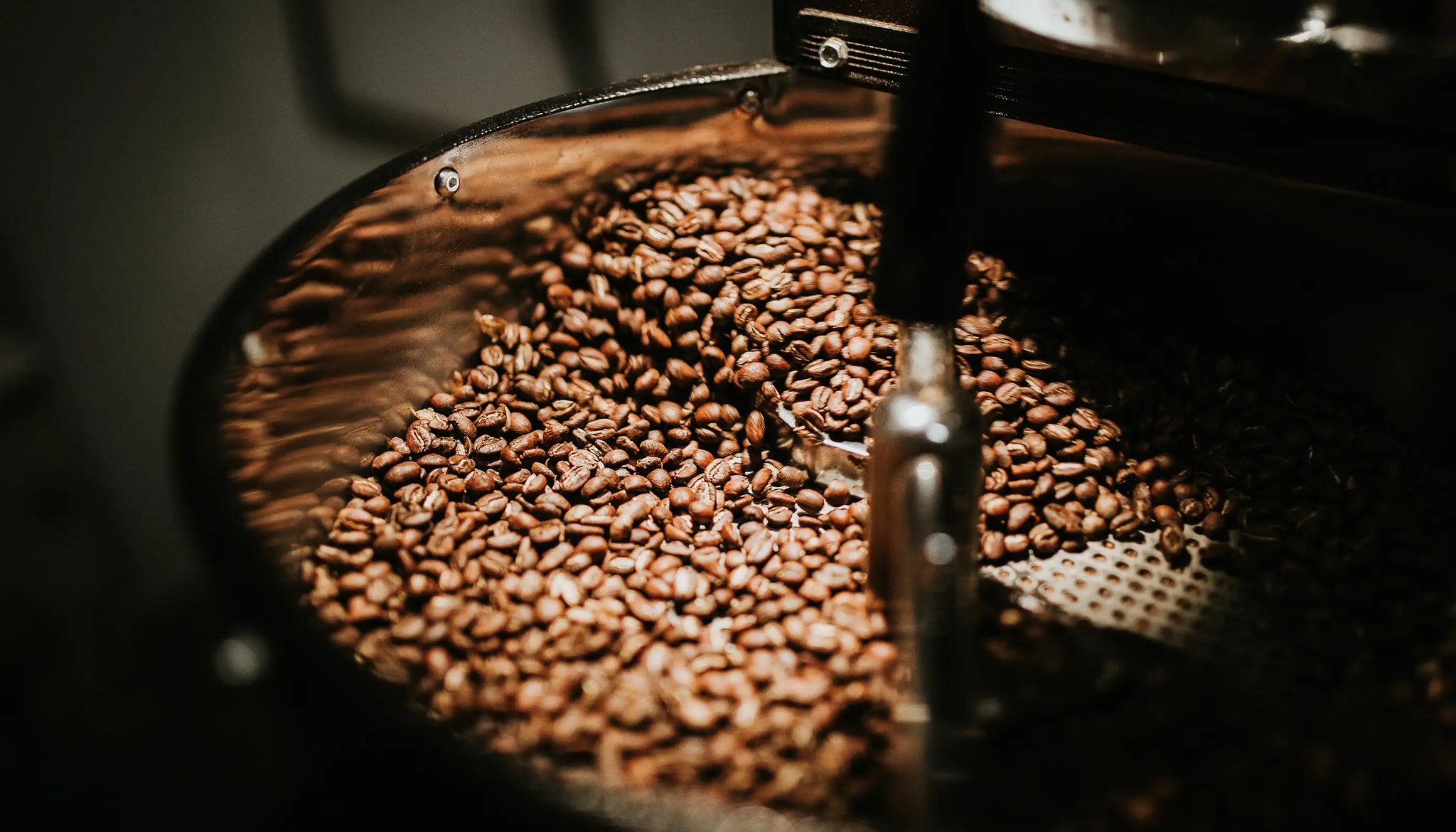Comprehending Coffee Beans: the Trip From Coffee to Blended Coffee Beans

The Beginnings of Coffee: A Worldwide Viewpoint
While you could think of coffee as a contemporary staple, its beginnings trace back centuries, linking with cultures across the world. The story starts in Ethiopia, where tale says a goat herdsman called Kaldi uncovered the stimulating results of coffee beans after noticing his goats frolicking vigorously after eating them.
As profession routes broadened, coffee made its means to Europe in the 17th century, rapidly getting popularity. It changed from a magical drink into an everyday routine, intellectual exchanges and inspiring gatherings. Each culture added its special twist to coffee prep work, enhancing its background. This global journey highlights exactly how coffee links us, going beyond borders and unifying varied customs via a simple bean.
Cultivation and Harvesting of Espresso Beans
As coffee's journey developed, the focus shifted to the growing and harvesting of certain bean ranges, especially those utilized for espresso. You'll discover that espresso beans usually originate from Arabica or Robusta plants, each offering distinctive tastes. The suitable expanding problems include high altitudes and rich, well-drained dirt, which boost the beans' high quality.
Throughout the harvest, choosing techniques vary. In some areas, employees hand-pick ripe cherries, ensuring only the most effective fruit mosts likely to handling. In other areas, mechanical farmers are made use of, specifically on larger farms. When the cherries reach peak ripeness for optimum flavor., timing is important; you want to collect.
When harvested, the beans are planned for handling, which is necessary in identifying their last preference. Comprehending the cultivation and gathering processes offers you insight right into what goes right into your favorite espresso, enriching your appreciation for each and every mug.
Processing Techniques: From Cherry to Bean
Since you've learnt more about collecting espresso beans, allow's explore just how those cherries change right into the coffee beans you like. You'll see how different harvesting strategies effect taste, adhered to by the crucial steps of fermentation and drying out. Lastly, we'll damage down the milling and grading procedure that identifies your coffee's quality.
Collecting Techniques Clarified
When it concerns coffee, recognizing harvesting techniques is crucial, because they straight influence the taste and high quality of the beans you appreciate. There are two main approaches: discerning picking and strip selecting. Selective choosing includes hand-picking just ripe cherries, guaranteeing you get the most effective high quality beans. This technique usually leads to a richer flavor profile, though it's more labor-intensive. On the various other hand, strip choosing means harvesting all cherries at once, regardless of ripeness. While it's quicker and more affordable, this can cause a mix of tastes, affecting the final item. Inevitably, the choice of harvesting technique can considerably affect your coffee experience, so it's worth knowing exactly how those beans made it to your cup.
Fermentation and Drying Out
After collecting, the next actions in processing coffee beans play a substantial function in forming their taste. You'll find that fermentation is important, as it aids break down the mucilage bordering the beans, boosting their preference account. Depending on the approach, this process can last from a couple of hours to a number of days, with varying results based upon temperature level and humidity.
Once fermentation is total, drying out adheres to, which is similarly vital. You can pick from mechanical or sun-drying drying out methods. Sun-drying enables the beans to absorb flavors from the setting, while mechanical drying guarantees regular wetness levels despite weather. Correct drying is important to avoid mold and mildew and protect the beans' quality, inevitably affecting your mug of coffee.
Milling and Grading Process
As fermentation and drying set the phase for flavor advancement, the milling and grading procedure guarantees that just the very best coffee beans make it to your cup. This phase entails getting rid of the outer layers of the coffee cherry, consisting of the parchment and husk. After milling, the beans are arranged by size and weight, making sure a consistent top quality. You'll discover that grading assists recognize problems and classify beans, which influences flavor and scent. High-quality beans receive a greater grade, causing a richer coffee experience. As soon as graded, the beans await product packaging and shipping, preserving their special characteristics. This precise process is crucial for delivering the outstanding preference you appreciate in every sip of your favorite mixture.
Toasting Strategies: Opening Taste Possible
When you roast coffee beans, the approach you select can dramatically affect the taste account. Recognizing the partnership in between time, temperature level, and toasting strategies is vital to disclosing the her explanation possibility of your mixture. Let's check out just how these aspects integrated to produce the ideal cup.
Roasting Methods Discussed
While you might assume that all coffee roasting techniques yield the very same results, the fact is that each method reveals one-of-a-kind flavor possibilities in the beans. Drum toasting utilizes a revolving drum to uniformly disperse heat, improving caramelization and generating a balanced taste. Air roasting, on the other hand, distributes warm air around the beans, promoting a lighter roast with obvious acidity.

Effect On Flavor Account
Different roasting approaches not only influence the procedure but additionally significantly influence the flavor profile of the coffee beans. When you pick a light roast, you'll experience brilliant level of site here acidity and floral notes, showcasing the bean's beginning. In contrast, a medium roast equilibriums level of acidity with sweet taste, commonly revealing chocolatey undertones. Dark roasts, on the various other hand, highlight bold, smoky tastes, sometimes concealing the bean's one-of-a-kind characteristics. Each method exposes various oils and substances, resulting in a large range of flavors. By try out different roasting designs, you can uncover which accounts reverberate with your taste. Understanding these nuances assists you value the virtuosity behind your mug of coffee, boosting your total experience with every sip.
Time and Temperature Factors
To launch the complete taste capacity of coffee beans, both time and temperature during the toasting procedure play significant roles. When toasting, you'll discover that higher temperatures can quickly establish flavors, but if you hurry it, you could finish up with charred notes. Conversely, lower temperatures enable an extra steady flavor development, showcasing the beans' one-of-a-kind qualities.

Timing is just as important; prolonging the roast too long can bring about a loss of acidity and illumination, while too brief a roast might leave the beans underdeveloped. Locating that wonderful place needs technique and trial and error. By readjusting these elements, you can disclose the rich, complicated tastes hidden within each bean, developing a genuinely amazing coffee experience.
The Art of Mixing: Crafting Distinct Coffee Accounts

Start by choosing a base coffee that gives a strong structure. A bright Ethiopian bean can bring fruitiness, while an abundant Brazilian coffee includes body.
As you mix, bear in mind that each mix narrates. You're not simply making coffee; you're developing an experience. So, take your time, taste often, and take pleasure in the trip of finding your trademark blend.
Brewing Approaches: Just How Prep Work Impacts Flavor
Mixing coffee opens up a domain of taste opportunities, but just how you make that blend can considerably affect your last mug. On the other hand, a pour-over highlights the coffee's quality and brightness, excellent for showcasing fragile notes.
Espresso, with its high stress, produces a focused shot that highlights sweetness and crema. If you choose a lighter mixture, take into consideration a cold mixture method; it produces a smooth, less acidic preference.
Eventually, experimentation is vital. Changing variables like water temperature level, grind size, and make time can transform your coffee's account. Accept the art of developing to discover the tastes hidden in your coffee blends. The right technique can boost your experience to new elevations.
The Future of Coffee: Sustainability and Development
As the coffee market evolves, sustainability and advancement are becoming necessary for dealing with ecological challenges and conference customer demands. You'll see that more coffee business are taking on environment-friendly practices, from sourcing beans morally to executing lasting farming strategies. These changes not only help the world however also enhance the high quality of the coffee you appreciate.
You might see developments read like naturally degradable product packaging and water-saving developing methods that decrease waste. Advanced innovation, such as blockchain, is likewise coming to be preferred, making certain openness in the supply chain, which allows you to trace your coffee back to its origins.
Additionally, purchasing regional neighborhoods and supporting farmers with fair trade efforts fosters a much more sustainable coffee ecosystem. As you drink your next cup, keep in mind that your choices can add to a brighter future for coffee. By choosing sustainable brands, you're not just taking pleasure in a drink; you're making a favorable effect on the world.
Frequently Asked Questions
What Is the Difference In Between Arabica and Robusta Beans?
Arabica beans are smoother, sweeter, and have a greater acidity, while robusta beans are more powerful, a lot more bitter, and consist of more high levels of caffeine. When brewing your coffee., you'll observe these differences in taste and scent.
How Does Elevation Affect Coffee Bean Flavor?
Elevation effects coffee bean flavor substantially. Higher elevations create beans with brighter acidity and complicated tastes, while lower elevations frequently produce beans that are much heavier and much less nuanced. You'll observe these distinctions in your mug!
What Are the Health Perks of Drinking Coffee?
Consuming alcohol coffee can increase your power, improve psychological focus, and even boost physical performance. It's abundant in antioxidants, might lower the danger of certain conditions, and can promote a healthier metabolic rate when consumed in small amounts.
Can Coffee Beans Be Reused for Brewing?
Yes, you can recycle coffee beans for brewing, however the taste may be weak. If you enjoy exploring, try reusing them in various ways, like chilly mixtures or adding to shakes for an added kick.
How Should I Shop Coffee Beans for Freshness?
To keep your coffee beans fresh, store them in an impermeable container in an amazing, dark area. Avoid subjecting them to light, dampness, or warm, as these variables can rapidly deteriorate their taste and fragrance.
Understanding Coffee Beans: the Journey From Espresso to Blended Coffee Beans.
Currently that you have actually found out about harvesting espresso beans, let's check out exactly how those cherries change right into the coffee beans you enjoy.When you roast coffee beans, the method you choose can drastically influence the taste profile - Single Origin Espresso.While you may believe that all coffee toasting techniques produce the exact same outcomes, the reality is that each strategy exposes one-of-a-kind taste possibilities in the beans.Various toasting approaches not just influence the process yet additionally greatly affect the taste account of the coffee beans
Comments on “Discover the Distinctive Flavor Profile of SOE Single Origin Espresso Today”